
Concept explainers
Which elements (individual elements, not combinations of elements) of the networks in Fig. 7.64. are in series? Which are in parallel? As a check on your assumptions, be sure that the elements in series have the same current and that the elements in parallel have the same voltage. Restrict your decisions to single elements not combinations of elements.

Fig 7.64
(a)
The elements of the network that are in series and in parallel.
Answer to Problem 1P
Explanation of Solution
Given:
A network is given as below.

Concept Used:
Elements in the series have the same current.
Elements in the parallels have the same voltage.
Calculation:
A network is given as below.
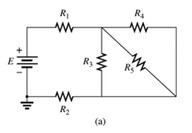
Since same current is flowing through
So,
Also, since same voltage is flowing through
So,
Conclusion:
Hence,
(b)
The elements of the network that are in series and in parallel.
Answer to Problem 1P
Explanation of Solution
Given:
A network is given as below.
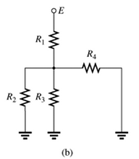
Concept Used:
Elements in the series have the same current.
Elements in the parallels have the same voltage.
Calculation:
A network is given as below.
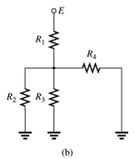
Since same current is flowing through
So,
And since same voltage is flowing through
So,
Conclusion:
Hence,
(c)
The elements of the network that are in series and in parallel.
Answer to Problem 1P
Explanation of Solution
Given:
A network is given as below.
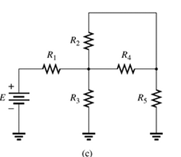
Concept Used:
Elements in the series have the same current.
Elements in the parallels have the same voltage.
Calculation:
A network is given as below.
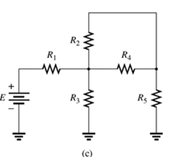
Since same current is flowing through
So,
Since same voltage is across
So,
Conclusion:
Hence,
Want to see more full solutions like this?
Chapter 7 Solutions
Introductory Circuit Analysis (13th Edition)
Additional Engineering Textbook Solutions
Starting Out with Java: From Control Structures through Data Structures (4th Edition) (What's New in Computer Science)
Introduction To Programming Using Visual Basic (11th Edition)
Starting Out with Python (4th Edition)
Degarmo's Materials And Processes In Manufacturing
Computer Science: An Overview (13th Edition) (What's New in Computer Science)
Database Concepts (8th Edition)
- 4. Develop the relationship between the output voltage Vout and the input voltage for the circuit below. Di R R Vout +arrow_forwardPlease solve this question step by step handwritten solution and do not use chat gpt or other ai tools thank youarrow_forwardPlease solve this questions step by step detailed and handwritten, do not use chat gpt or other ai tools thanks!arrow_forward
- Please solve this questions step by step detailed and handwritten, do not use chat gpt or other ai tools thanks!arrow_forwardPlease solve this question step by step with explanation and handwritten solution please do not use chat gpt or other ai tools thanksarrow_forwardPlease solve this question fully step by step handwritten and do not use chat gpt or any ai tools thanksarrow_forward
- Please solve this question step by step hand written solution and do not use chat gpt or any ai tools thanks!arrow_forwardPlease Solve this question step by step handwritten solution and do not use chat gpt or any ai tools thanks!arrow_forwardPlease solve this question step by step handrwitten solution and do not use chat gpt or any ai tools thanks.arrow_forward
 Delmar's Standard Textbook Of ElectricityElectrical EngineeringISBN:9781337900348Author:Stephen L. HermanPublisher:Cengage Learning
Delmar's Standard Textbook Of ElectricityElectrical EngineeringISBN:9781337900348Author:Stephen L. HermanPublisher:Cengage Learning
